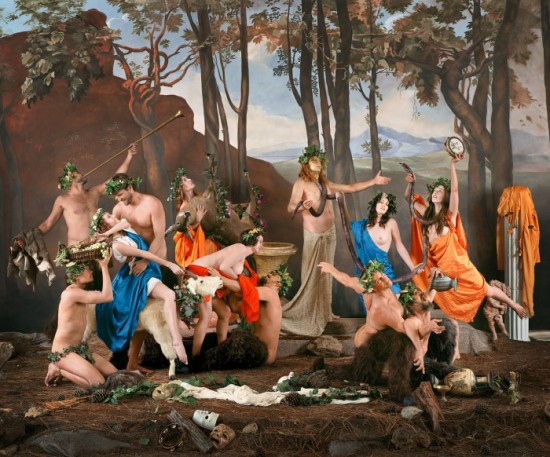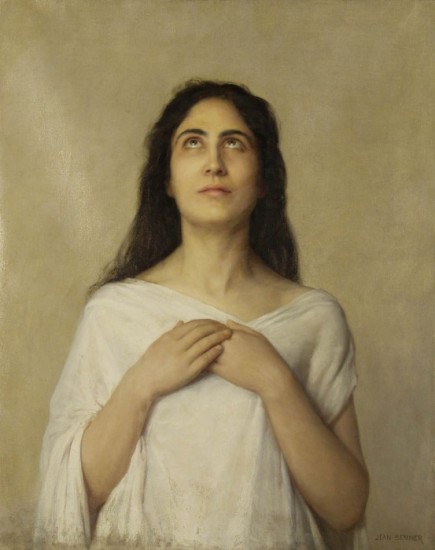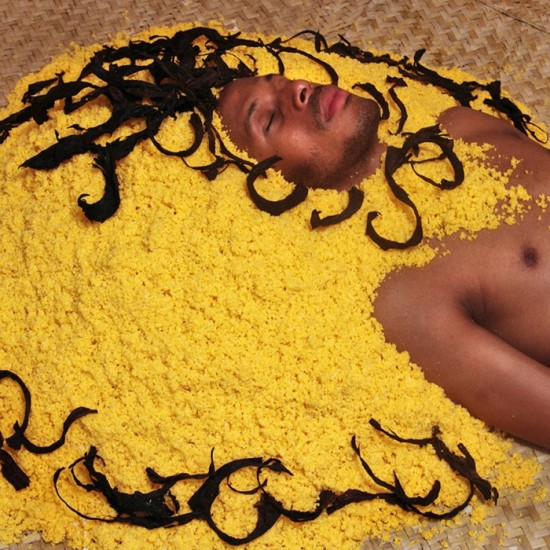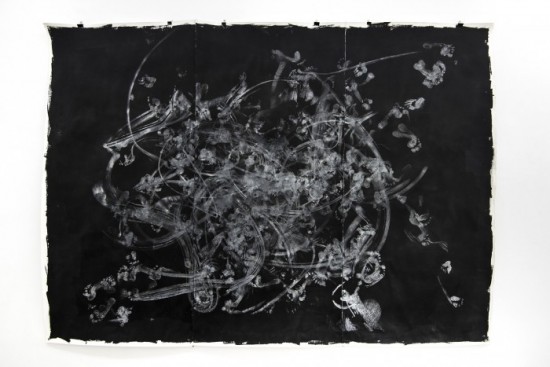In his classic Ecstatic Religion: A Study of Shamanism and Spirit Possession, I. M. Lewis (1971) contends that ritual, belief, and spiritual experience are the three cornerstones of religion, with the third certainly being the most important. Although disputed, this thesis strongly resonates with trends and themes currently taken up by gallerists and exhibition curators. Last year saw the launch of two major exhibitions on the topic of ecstasy: one at the Musée d’ethnographie de Genève (MEG) in Switzerland entitled Afrique: Les religions de l’extase (Africa: The ecstatic religions) and the other one simply called EKSTASE (Ecstasy) at the Kunstmuseum Stuttgart in Germany.
The experience of dissociation of the subjective individual marks all techniques of ecstasy—be it conceptualized as a religious drama, overwhelming emotion, or self-induced practice of alienation and/or expansion of consciousness. In all its devastating power and unpredictability, the rapture and frenzy of ecstatic experience continues to exert an unbroken, if not amplified, fascination. Even though the two exhibitions could have hardly been more different—in scope as well as ingenuity—they both set out to fathom this fascination and its many facets. While the exhibition in Geneva directly refers to Lewis and focuses on religious ecstatic experience on the African continent and among the African diaspora, the proclaimed aim of the show in Stuttgart is to move beyond religion and to consider profane varieties of ecstasy.
Geneva
Afrique: Les religions de l’extase
Musée d’ethnographie de Genève, Switzerland (18 May 2018 to 6 January 2019)
What immediately stands out when entering the exhibition space at the MEG is the central role of audiovisual media in this exhibition. Photography, experimental video, documentary film and photographs, filmed interviews/portraits, video clips, as well as sound recordings and sound installations dominate the showroom. In the audio guide, Boris Wastiau, the exhibition curator and director of the MEG, highlights the importance of audiovisual displays: “Photography, and particularly the sensibility of contemporary photographers, enables us to explore different facets of this religious experience—on pilgrimages, during regular acts of worship and [in] possession cults; during moments captured, photographers enable you to fully apprehend the emotional impact of these religious practices” (my translation). This is not to claim that the exhibition itself attempts to provide a virtually ecstatic experience for the visitors; it is, however, an effort to do justice to the experiential, multisensory, and embodied proficiency of religious practitioners.
Large format photo panels dominate the entrance (Figure 1); the entire scenography of the exhibition space is designed as an invitation to immerse and engage the visitor with the rather abstract subject of religion.
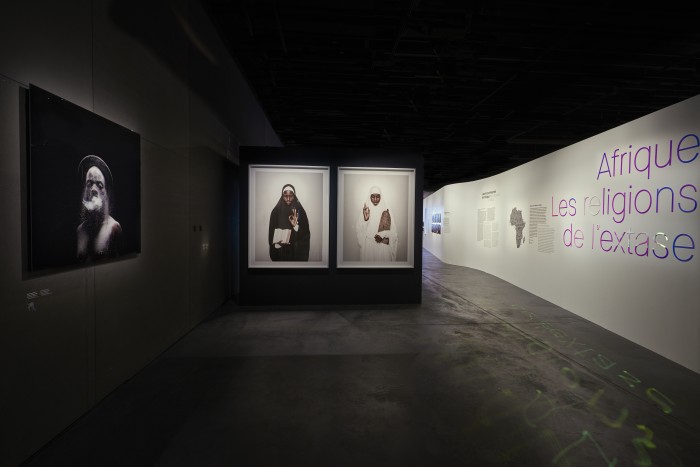
Figure 1: “Les monothéismes en Afrique,” Afrique: Les religions de l’extase (scenography: Franck Houndégla, Sophie Schenck, and Patrick Roger; © MEG, J. Fuchs, 2018).
The exhibition is divided into four sections, with the first focusing on monotheisms and the second highlighting indigenous traits of African religions, such as divination, ancestor cults, and sacrifice. A third part deals with possession cults and embodied techniques of trance, while the last section, on “magico-religious universes,” shows the diversity and complexity of religious practices in Africa, including sorcery, the power of masks, cults venerating twins, and water deities.
Dealing with varieties and appropriations of Christianity, Judaism, and Islam, the first section impresses with visually stunning objects, artworks, and spiritual components of African Christianity. Most of these come from the Ethiopian and Eritrean Orthodox churches, others capture the dimensions of Pentecostalism and exorcism in Nigeria (Figure 2), and a remarkable photo series about a Train Church (1986) in South Africa by Santu Mofokeng is on display.
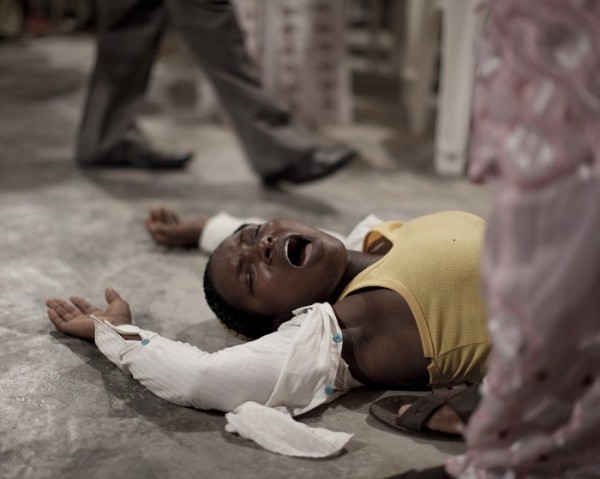
Figure 2: Photograph from the series made alongside Tropical Gift by Christian Lutz, Oporoza, Nigeria, Niger Delta (courtesy of Christian Lutz, 2010).
The enormous and colorful prints of Fabrice Monteiro’s photographs of The Way of the Baye Fall series visually dominate the transition to the second and third sections (Figure 3). The Baye Fall is a subgroup of the Mouride brotherhood, a large Sufi order in Senegal and the Gambia (Figure 4).
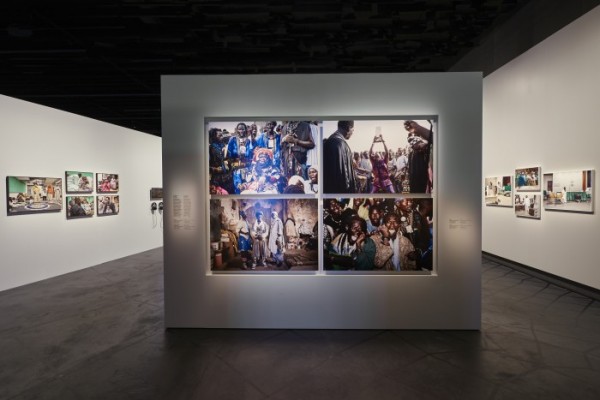
Figure 3: “Les monothéismes en Afrique,” Afrique: Les religions de l’extase (scenography: Franck Houndégla, Sophie Schenck, and Patrick Roger; © MEG, J. Fuchs, 2018).
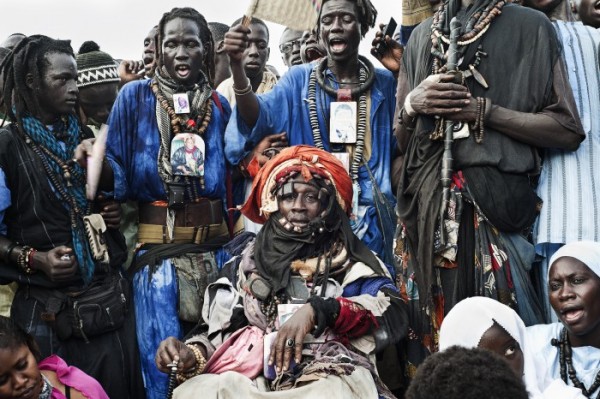
Figure 4: “Norayni,” The Way of the Baye Fall (2012) series by Fabrice Monteiro, Yoff, Senegal (displayed at the MEG on loan from Fabrice Monteiro and the Mariane Ibrahim Gallery, Seattle).
Particularly noteworthy is the work of the video artist Theo Eshetu, who produced five exclusive installations for the exhibition. Drawing on the history of art, anthropology, and religion, Eshetu combines artistic video with ethnographic research and produces sensorial cinematographic pieces that will fascinate many visitors. His nine-minute video installation Zar Possession (Figure 5) “recreates both the visual experience of the illuminations which lead followers in a state of trance and the transformative effect the music has on them” (caption from exhibition). Recorded in Cairo, this breathtakingly beautiful and mesmerizing stroboscopic clip celebrates ecstatic song and dance.
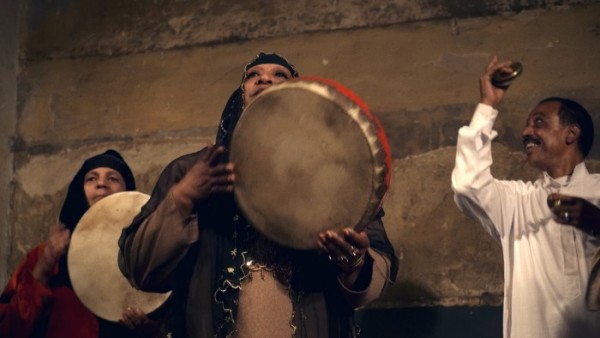
Figure 5: A still from Zar Possession (2018) video installation by Theo Eshetu at the MEG, with the participation of Samuele Malfatti, Keir Fraser, Shaymaa Shoukry, and the Mazaher of Makan (Egypt) group).
The fourth and final section covers, among other topics, the Yoruba cult of twins and includes a floor projection of the video River (3:46 min., 2014) by Ibeyi,[1] the French Cuban musical duo of the twin sisters Lisa-Kaindé Diaz and Naomi Diaz. Again, this work’s imagery is utterly captivating, and its sonic power stays alive in the visitor’s imagination long after the museum visit.
In sum, Africa in the Geneva exhibition is understood and presented not as a geographical space but rather as a cultural entity, as the exhibits also cover diasporic religious practices in the Americas and Europe. The show never runs the risk of exoticizing or spectacularizing ecstatic bodies and, at the same time, avoids an instructive or explanatory tone. It is entirely up to the visitor to immerse in the sensorial experience the exhibition provides with its carefully choreographed sonic/lighting/scenographic/photographic concepts, or to consult the audio guide for more information. The media concept and the approach to grasp religious experience in its multisensory facets is nothing less than superb, and I recommend this brief video for selected impressions from the exhibition and interviews with the audiovisual artists.
The exhibition highlights that a focus on the aesthetic and experiential side of religion that takes the bodily sensation people feel, the inner voices they hear, and the sacrificial action they perform seriously—and not the common search for the “meaning” of images or symbols in art exhibitions—contributes to a better understanding of the persuasive power and effectiveness of religion. In correspondence with this approach and by highlighting the material and sensual forms of religion, the exhibition implicitly argues that religion is more than holy texts or a set of beliefs, and candidly puts I. M. Lewis’s opening statement, namely that spiritual experience is the most important cornerstone of religion, into practice.
The excellently produced audio guide can be downloaded on mobile devices in English or French, but the exhibition catalog (Wastiau 2018) is available only in French, and while it echoes the outline of the exhibition, it cannot match the power of the many enticing audiovisual components. The museum website additionally provides a useful multilingual bibliography for those who want to continue their research on the topic.
This gem of an exhibition—for anthropologists working on the topic of ecstatic religion, as well as for anyone broadly interested in religious experience—may have a deserving successor in the MEG’s next exhibition. La fabrique des contes (The fabric of fairy tales), 17 May 2019 to 5 January 2020, will explore the magic world of fairy tales and again focuses on sensory experience and invites museum visitors to immerse in a phantasmagorical universe. Eight little-known fairy tales from around the world will be staged in “theaters of the imaginary” that use magic lanterns, dioramas, mirrors, and optical illusions to engross the audience in a realm beyond the rules of mundane reality.
Stuttgart
EKSTASE
Kunstmuseum Stuttgart, Germany (29 September 2018 to 24 February 2019)
Only four months after the opening of the Afrique exhibition in Geneva, the Kunstmuseum Stuttgart (funded by the municipality) launched its major show of the year under the title theme EKSTASE. Dividing the exhibition into nine thematic spaces that span three levels of the museum, the team of curators noticeably aimed for an encompassing exploration of the phenomenon in art, music, dance, and religion. Yet, encompassing here means a focus on the Western arts since antiquity—a decision possibly motivated by the fact that the Kunstmuseum’s task is to cater to the wider public and, hence, that the exhibition is primarily directed at and designed for a mainstream audience unacquainted with the theme. This proves a rather challenging premise, and the pitfalls of this challenge seem to transpire at every step and turn a visitor takes throughout the exhibition spaces. Unfortunately, the Kunstmuseum’s intention to fulfill its educational mission—and to not transgress boundaries instead—has led to a rather uninspired selection of artworks, which are exhibited with an emphasis on didactic presentation.
The exhibition guide summarizes the main ideas and artworks and gives an involuntarily accurate insight into the rather conventional structure of EKSTASE. The tedium, in my view, is mainly caused by the curators’ insufficient consideration of the fact that attempting to “exhibit” ecstatic experience in a rather ordered, decidedly non-ecstatic museum setting is a contradiction per se and hence poses particular challenges for the concept and the implementation of an exhibition of this caliber. This negligence is escalated by the fact that the Kunstmuseum ignores non-Western forms of ecstatic experience and has made hardly any effort to consider ecstatic practices and engagements beyond the realm of conventional art.
Within this frame, the thematic sections are quite diverse and are arranged in the following order: Dionysian cults, religious ecstasies, Candomblé, shamanism, youth culture, sports, dance ecstasies, intoxication and drugs, and, last but not least, amorous rapture. These sections are bracketed by a prelude—Carsten Höller’s Light Wall (2000/2017), which is composed of light bulbs blinking at seven to twelve hertz and is said to “induce optical and acoustic hallucinations” (which did not work for me)—and by an epilogue, Dream House (1990) by the composer and musician La Monte Young and the artist Marian Zazeela. This installation covers an entire floor: the room is flooded with magenta light and music, and the acoustic perception changes dramatically depending on the position of the visitors in the room; it is the closest the exhibition gets to creating an experience of “ecstasy” in the wider sense of the term.
The standard exhibition tour starts with the presumed historical beginnings of ecstatic frenzy: Dionysian cults. EKSTASE exhibits some astonishingly beautiful clay vases from circa 490/480 BCE depicting dancing maenads. From there, the exhibition proceeds with variations of the Bacchanti motif in various oil paintings, etchings, and lithographs, ranging from Franz von Stuck to Pablo Picasso. Complementing the classic depictions of Dionysian cults with Eleanor Antin’s contemporary, large-scale photographic tableaux staging scenes from Greek and Roman mythology is one of the more creative ideas of the curatorial team (Figure 6).
Overall, however, the exhibition rarely strays from the obvious. In the section on religious ecstasies, for example, the focus is limited to depictions of Christian mystics and plays on iconographic formulae that are widely known and rather clichéd, such as Jean Brenner’s L’Extase (Figure 7), which features in the official exhibition announcements and posters, and the medical photographs of “hysterics” and “epileptics” taken by Jean-Martin Charcot’s student Paul-Marie-Léon Regnard in the late nineteenth century at the Pitié-Salpêtrière Hospital in Paris.
Only in the catalog do the curators briefly refer to the precursors of this “genre,” such as Caravaggio’s Saint Francis of Assisi in Ecstasy (ca. 1559) and Mary Magdalene in Ecstasy (1606), or Raphael’s The Ecstasy of St. Cecilia (ca. 1514). Yet, this comes without exploring the parallels of erotic and religious pictorial depictions or their relevance for the human sciences (i.e., for medical knowledge, psychology, or the analysis of animism).
The EKSTASE is particularly weak when it comes to non-Western approaches to ecstasy. Two rooms, one on Candomblé (an Afro-Brazilian religion that combines elements of Roman Catholic, Yoruba, and indigenous South American religions) and another on shamanism, convey an almost painful ignorance of global religious phenomena immediately concerned with ecstasy, such as trance and spirit possession cults. The video works by the Brazilian artist Ayrson Heráclito, Xirê (37:54 min., 2018) and Elégùn (5:45 min., 2018)—displayed to convey Candomblé music and produced especially for the exhibition—are static, uninspired, and boring. In fact, the videos fail to highlight that music and dance play important roles in Candomblé ceremonies because they enable worshippers to become possessed by the orixás (gods).
Similarly, Heráclito’s photo installation Bori (2009) appears out of place (Figure 8). His large-format portraits create a weirdly aestheticized and exoticized ambiance because they are not even remotely connected to the exhibition topic. A collection of twelve cloth dolls by Valdete Ribeiro da Silva that are supposed to represent orixás is equally misplaced and trivial. It neither explains which role the dolls play in Candomblé and how they are used in everyday religious practice nor does the viewer get an idea why the gods have human-like features and how they are worshipped. Without these crucial contexts, this complex syncretistic belief system with a highly political past during the times of the slave trade is portrayed as a naïve puppet theatre. One cannot help but feel that this room was carelessly assembled to tick-off the sujet “non-Western” religious experience. The attempt to visualize or materialize the invisibility and secrecy of Candomblé cosmology and practice fails dreadfully in any case.
Likewise, the two-channel video installation Shaman-Travel (20 min., 2002) by Christoph Keller is not only infuriatingly random and ethnographically uniformed but also sloppily edited and assembled. Each half of the double projection shows an excerpt from the same clip lasting for about one minute. By assembling arbitrary scenes of ecstasy “worldwide” that fail to discern trance, shamanism, divination, sacrifice, medical procedures, and ritualistic practices, and that fail to reference the origins of the video snippets (mainly classic scientific ethnographic films from the 1950s and 1960s), this work uncritically reproduces the colonial gaze and sheds a very negative light on the entire section.
Equally frustrating is the section about sports, which, for example, fails to distinguish between the endorphin-induced ecstatic experience of athletes and the unleashed enthusiasm of viewers of mass sports events. Both experiences are treated as if they are variants of the same phenomenon. Again, this inattentiveness to detail and the lack of differentiation makes the visit a rather trying experience at times.
The most stimulating section is certainly the one on dance. Here, the viewer is invited to follow four (female) modern expressive dancers (Isadora Duncan, Mary Wigman, Gret Palucca, and Anita Berber), their performances, and the manifold ways in which they inspired (male) visual artists such as Ferdinand Hodler, Ernst Ludwig Kirchner, and Otto Dix throughout the first half of the twentieth century. Particularly expressive are the black-and-white photographs of the four dancers entitled Ecstatic Dances by Hugo Erfurth (1917) and Charlotte Rudolph (1931/1932).
Also in this section, Luis Casanova Sorolla’s Yui Kawaguci (2015), a video of an experimental dance improvisation and the resulting “documentation” (a 340-by-220 cm watercolor paper and gouache with natural pigments), acts like a magnet on the audience (Figure 9). Unfortunately, another fascinating work in this section is not properly introduced and contextualized, as the curators fail to embed Joachim Koester’s black-and-white-video Tarantism (6:30 min., 2007) in any wider setting and instead placed the screening in a corner, where it goes unnoticed. Yet, these highlights make it very apparent that the other exhibition sections would have benefitted from additional audiovisual, experimental, and/or interactive works, as these works truly engage and move the visitors.
The supporting program and the catalog succeed where the exhibition fails. The Haus des Dokumentarfilms has assembled an impressive film program that accompanies the exhibition, and there are several panel discussions and literary readings on the topic. The catalog (Gross et al. 2018), in English and German, features several short essays written by the curators on each section that fill some gaps and to some extent discusses themes beyond the exhibits and their rigid ordering.
All in all, however, the Kunstmuseum Stuttgart exhibition is hardly ever surprising and, in contrast to the MEG exhibition, lacks a coherent scenographic concept; the curators fail to acknowledge the thin line between useful contextualization and instructiveness, which makes the visit such a tenacious experience. It is difficult to assemble a good and engaging exhibition on the topic of ecstasy when being too cautious not to push your audience out of their comfort zone.
From April to August 2019, an amended version of EKSTASE will be exhibited at Zentrum Paul Klee in Bern, Switzerland. Curator Martin Waldheim promises some new and less obvious exhibits, for example, Paul Klee’s (rather unknown) photolithographic illustrations of Curt Corrinth’s expressionist 1920 novel Potsdamer Platz oder die Nächte des neuen Messias: Ekstatische Visionen (Potsdamer Platz, or the nights of the new messiah: Ecstatic visions) in which author and illustrator extol the liberating and transformative power of female sexuality. The exhibition in Bern will also include a comprehensive accompanying program and a curated film series at Kino Rex. It will definitely be worth a visit.
Michaela Schäuble is Associate Professor of Social Anthropology with a focus on Media Anthropology at the University of Bern. She trained as a documentary filmmaker and regularly curates film programs for exhibitions and festivals. Her current research focuses on ecstatic religious cults and saint veneration in the Mediterranean. In her participatory multimedia project “Tarantism Revisted,” she (with Anja Dreschke) uses film and photography as a research tool in investigating reenactment and religious performances as sites of revitalizing and negotiating tradition, heritage, and cultural identity in Southern Italy. She is the author of Narrating Victimhood: Gender, Religion, and the Making of Place in Post-war Croatia (Berghahn Books, 2014).
Note
[1]. Ibeyi (Ìbejì) means “twins” in Yoruba.
References
Gross, Ulrike, Markus Müller, Anne Vieth, Martin Waldmeier, and Nina Zimmer, eds. 2018. Ekstase in Kunst, Musik und Tanz / Ecstasy in Art, Music, and Dance. Kunstmuseum Stuttgart and Zentrum Paul Klee exhibition catalog. New York: Prestel.
Lewis, I. M. 1971. Ecstatic religion: A study of shamanism and spirit possession. London: Penguin.
Wastiau, Boris. 2018. Afrique: Les religions de l’extase. Musée d’ethnographie de Genève exhibition catalog. Paris: Somogy éditions d’Art.
Cite as: Schäuble, Michaela. 2019. “Michaela Schäuble: Ecstasy: A review of two recent exhibitions on consciousness-expanding experience.” FocaalBlog, 23 January. www.focaalblog.com/2018/01/23/michaela-schauble-ecstasy-a-review-of-two-recent-exhibitions-on-consciousness-expanding-experience.
Discover more from FocaalBlog
Subscribe to get the latest posts sent to your email.
